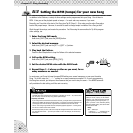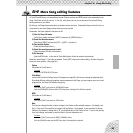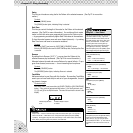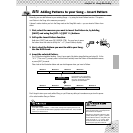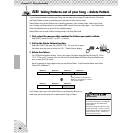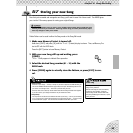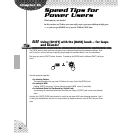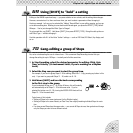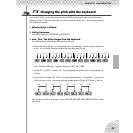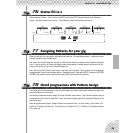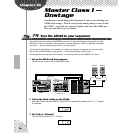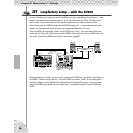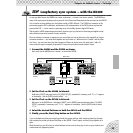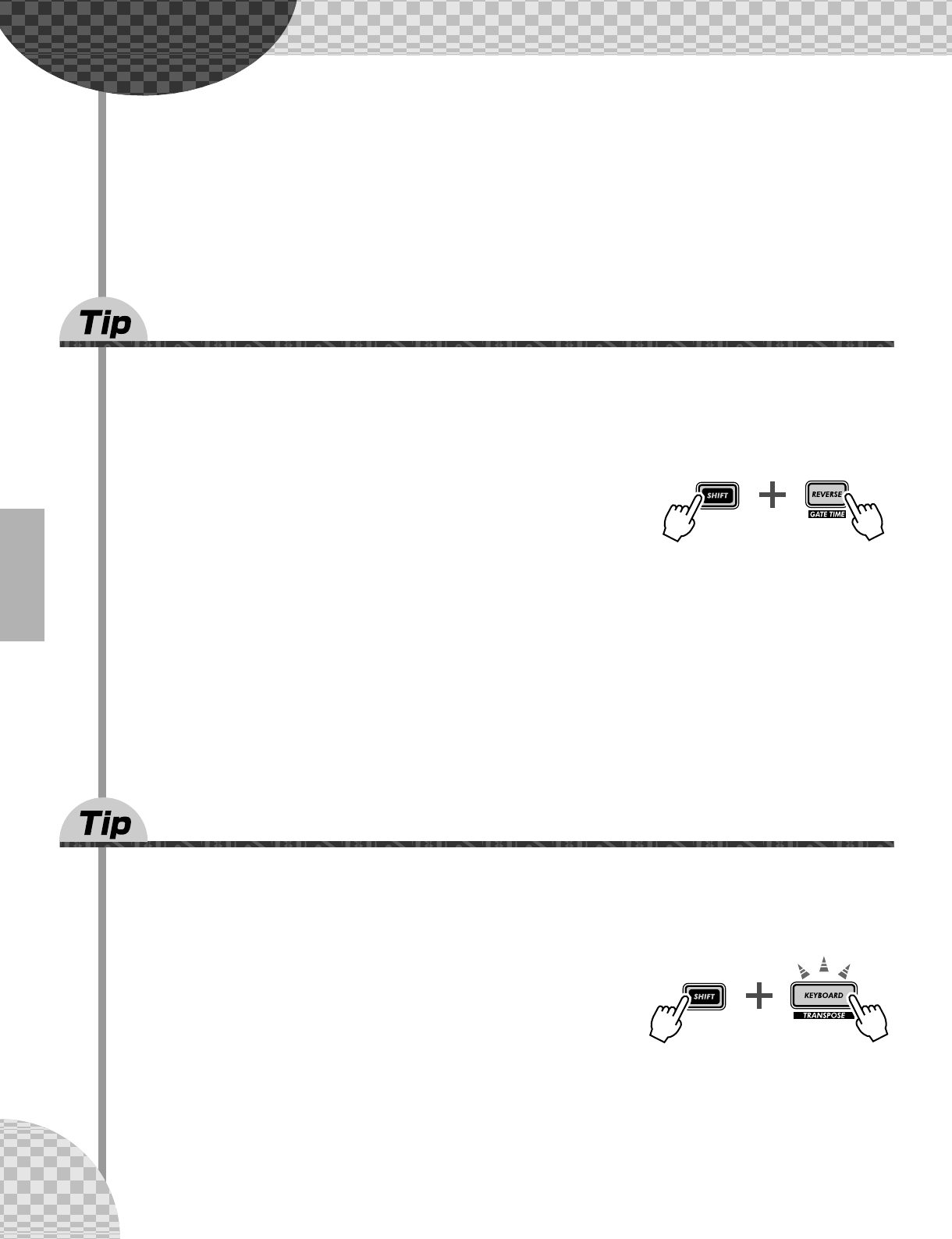
92
Chapter 17
Real World Tips
This chapter is a grab bag full of various practical tips that solidify your pro-
gramming chops and put you on the way to truly mastering the instrument.
You’ve seen all these features before. Now, try them out in these real-world
examples — and explore some new, uncharted sound-shaping paths on your
own.
71 Adjusting the Gate Time with the [DATA] knob
Gate Time is a simple, yet effective way to change both the sound and feel of a Pattern. Try this tip in real
time, as the Pattern is playing — for dramatic, dynamic shifts.
1 Select and play a Pattern.
2 Call up Gate Time.
Hold [SHIFT] and press [GATE TIME] ([REVERSE]).
3 Tweak the [DATA] knob slowly to the left.
Very gradually, start turning Gate Time down — from 100, down to 40, 20, then even 10 or 1.
Hear what this does to all the tracks? Hear how everything — including the drums — is clipped, creat-
ing a tight, muted sound and producing a drop in dynamics.
4 Now, as quickly as you can, bring Gate Time back up to 60, 80 or 100 — or
more.
Hold [SHIFT] while you turn the [DATA] knob — that lets you jump through the values, and instanta-
neously bring the dynamics back up. Try to do it right before the first beat of a measure — and kick
everything back in on the “one.”
72 Adjusting the pitch with the [DATA] knob
Let’s do some more work with the [DATA] knob. This time we’ll play around with the pitch — using the
Transpose function.
1 Select and play a Pattern.
2 Call up Transpose.
Hold [SHIFT] and press [TRANSPOSE] ([KEYBOARD]).
3 While the Pattern is playing, use the [DATA] knob to
bring the pitch up and down.
For wild pitch changes, hold down [SHIFT] while you work the knob. Try alternating on beat between two
widely different values (for example, “-20” and “30”). Try also whipping the pitch way up in 60s
range, then bringing down to the 40s. Try random pitch changes, too, as the Pattern cycles. Lots of fun
stuff here!



